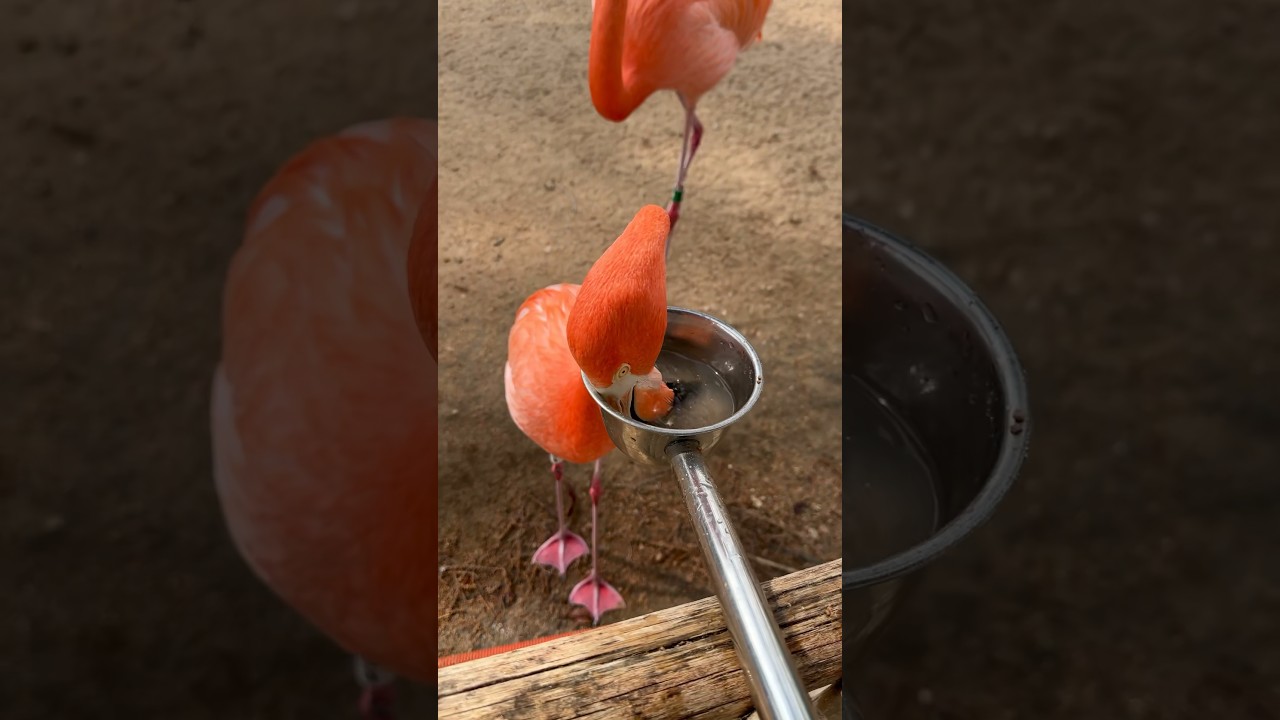– The nutritional needs and diet preferences of flamingos
– The role of interactive feeding sessions in enhancing animal welfare in zoos
– The impact of human interaction on flamingo behavior and well-being
– Conservation efforts for flamingos and their habitats
– How public engagement with animals like Cher the flamingo can foster wildlife conservation
Understanding the dietary requirements of flamingos is crucial for their care in zoos and wild habitats. Flamingos are filter feeders, primarily dining on algae, crustaceans, and small insects that they sift from the water with their specially adapted beaks. This diet is rich in carotenoids, pigments found in their food sources, responsible for the birds‘ vibrant pink and red feathers. The exact composition of a flamingo’s diet can vary significantly based on their species and the environment in which they live. In a controlled environment like a zoo, feeding times with Cher the flamingo provide her with the essential nutrients needed and serve as a critical interaction that stimulates her physically and mentally.
Interactive feeding sessions, such as snack time with Cher, the flamingo, play a pivotal role in zoo animal welfare. These sessions offer more than just nutritional benefits; they provide enrichment and mimic aspects of their natural foraging behaviors. Engaging directly with caregivers and even zoo visitors in a controlled manner promotes physical activity and cognitive challenges, helping to keep animals like Cher alert, active, and healthy. Furthermore, these interactions can strengthen the bonds between animals and their caregivers, which is essential for effective animal management and care.
Human interactions have a profound effect on the behavior and well-being of zoo animals. With species like flamencos, where social structure and interaction are integral to their lifestyle in the wild, controlled human interaction can offer positive stimuli, reducing stress and increasing the animals’ overall quality of life. However, these interactions must be managed carefully, ensuring they are beneficial rather than disruptive to the animals’ routine and well-being. For flamingos, social interaction—whether with their flock or human caregivers during activities like snack time—supports their natural behaviors and social dynamics.
Conservation efforts are vital for the survival of flamingos around the globe, many species of which face threats from habitat loss, pollution, and climate change. Protecting their natural environments and understanding their behaviors and needs is essential to continue these iconic birds. Conservation programs often involve habitat restoration, research, and public education to increase awareness of these birds’ plight. Zoos play a critical role in these efforts by providing safe havens for flamingos like Cher and educating the public on the importance of flamingo conservation and how they can help.
Public engagement sessions, such as snack time with Cher, the Flamingo, offer powerful education opportunities and foster a sense of stewardship towards wildlife conservation. Through these interactions, visitors gain a deeper appreciation and understanding of flamingos, motivating a more profound respect and desire to support conservation efforts. It demonstrates the interconnectedness of all species and the role each individual can play in preserving the natural world. Engaging the public with charismatic animals like Cher can be a significant step in advancing conservation goals, making every snack time an educational moment beyond simple feeding.
In sum, flamingos’ care, management, and conservation require a comprehensive approach that addresses their dietary needs, ensures their physical and mental well-being, and fosters public interest and involvement in their preservation. Snack time with Cher the flamingo is more than a feeding session; it’s a moment of connection that promotes animal welfare, encourages human empathy for wildlife, and supports broader conservation initiatives. Through understanding and engaging with animals like Cher, we can make strides in protecting these magnificent birds and their habitats for future generations.
*****
Source Description


